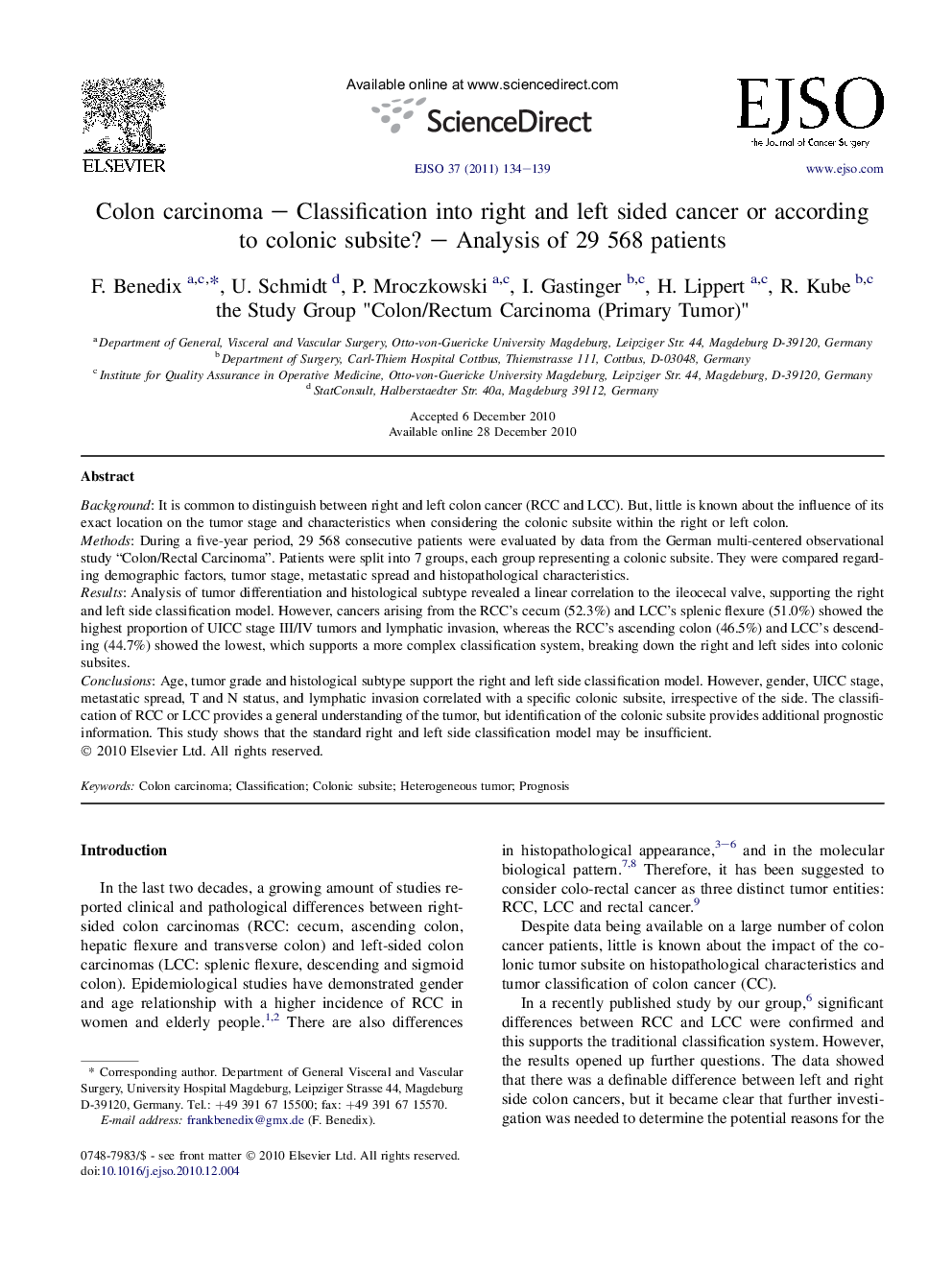| Article ID | Journal | Published Year | Pages | File Type |
|---|---|---|---|---|
| 3987087 | European Journal of Surgical Oncology (EJSO) | 2011 | 6 Pages |
BackgroundIt is common to distinguish between right and left colon cancer (RCC and LCC). But, little is known about the influence of its exact location on the tumor stage and characteristics when considering the colonic subsite within the right or left colon.MethodsDuring a five-year period, 29 568 consecutive patients were evaluated by data from the German multi-centered observational study “Colon/Rectal Carcinoma”. Patients were split into 7 groups, each group representing a colonic subsite. They were compared regarding demographic factors, tumor stage, metastatic spread and histopathological characteristics.ResultsAnalysis of tumor differentiation and histological subtype revealed a linear correlation to the ileocecal valve, supporting the right and left side classification model. However, cancers arising from the RCC’s cecum (52.3%) and LCC’s splenic flexure (51.0%) showed the highest proportion of UICC stage III/IV tumors and lymphatic invasion, whereas the RCC’s ascending colon (46.5%) and LCC’s descending (44.7%) showed the lowest, which supports a more complex classification system, breaking down the right and left sides into colonic subsites.ConclusionsAge, tumor grade and histological subtype support the right and left side classification model. However, gender, UICC stage, metastatic spread, T and N status, and lymphatic invasion correlated with a specific colonic subsite, irrespective of the side. The classification of RCC or LCC provides a general understanding of the tumor, but identification of the colonic subsite provides additional prognostic information. This study shows that the standard right and left side classification model may be insufficient.
